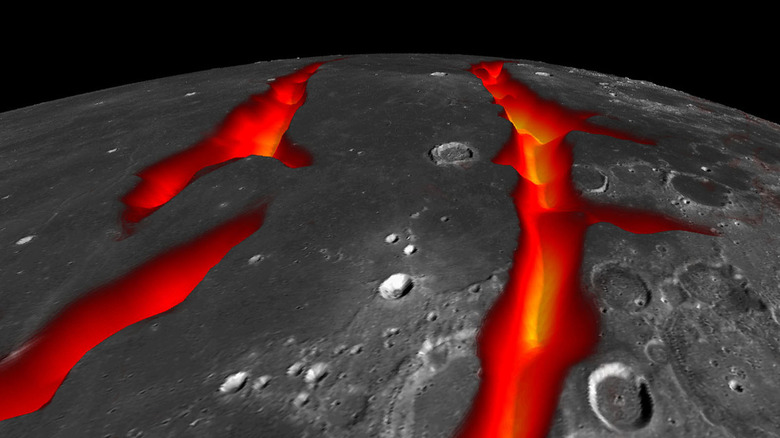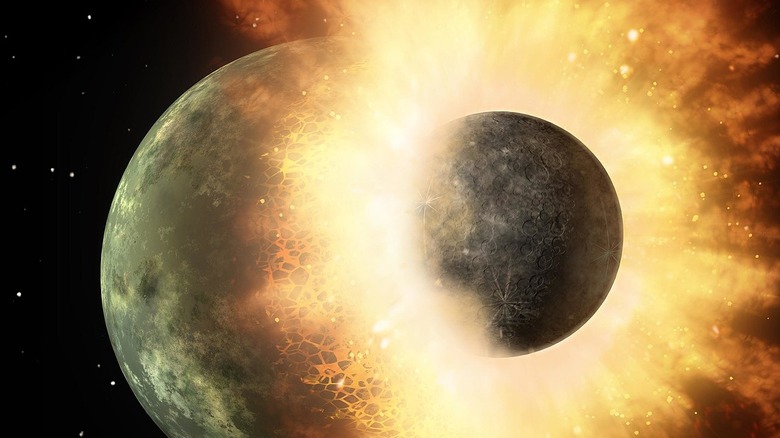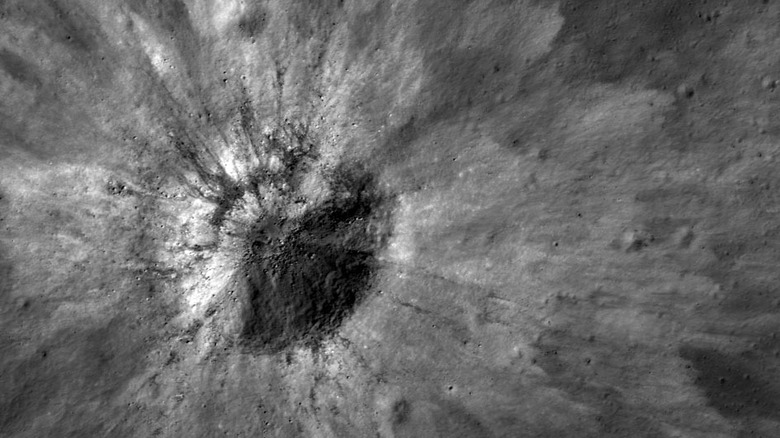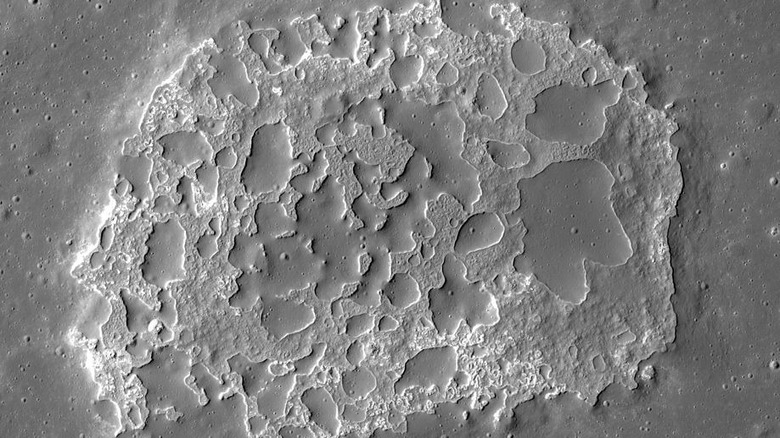Lunar Volcanoes Are Far More Active Than Expected
The first 600 million years of the moon's history were very tumultuous. It was born from a calamitous impact between the young earth and a rogue planet named Theia (after the mother of the moon in Greek mythology). The collision utterly destroyed Theia, but from the molten planetary debris, our moon was born (via NASA)
In its early history, the moon was "alive" with volcanoes. The dark patches on the moon (known as "maria," from the Latin word for "seas") that we see today are the result of lava oozing up from the interior and covering the low-lying areas of the lunar surface. As the mantle of the moon cooled, so too did the lava flows lessen, until around 1 billion years ago, when it was thought that the moon's geology went quiet for good (via Science).
But the Apollo missions to the moon both confirmed what we believed about the moon being a geologically "dead" world and hinted that it might still have some surprises for us. Thanks to NASA's Lunar Reconnaissance Orbiter and China's Chang'e-5 rover, we know for certain that our assumptions about lunar volcanism have been wrong, and it's likely that there are more volcanic eruptions in store for the moon's future.
Lunar origins
In the beginning, the moon was a ball of gas and molten rock. The heaviest elements, like iron, quickly "sank" to the heart of the proto-moon, forming its solid core. Above the core was a massive ocean of magma (via Lunar Planetary Institute). As it cooled, it began to crystalize. These crystals sank deeper into the moon, accumulating and eventually constituting the solid mantle. Lighter elements floated to the exterior to become the lunar crust (via Reviews in Mineralogy & Geochemistry).
Even this early in its life, the moon was tidally locked to the Earth. The nascent heat from the young Earth prevented the moon (which was about 10 times closer than it is now) from cooling evenly. The calcium and aluminum snows that fell from rock vapor clouds tended to fall on the far side of the moon, doubling the thickness of its crust, leaving the thinner near side more prone to having its crust ruptured by asteroid impacts. And there were a lot of asteroids (via Space.com).
Lunar cataclysm and lava flows
Around 3.8 billion years ago, the solar system was engulfed in a storm of asteroids called the Late Heavy Bombardment. The scars of this bombardment on our planet have long since been covered up by the relentless forces of weather and tectonics, but on the moon, they have been preserved for billions of years. This torrent of asteroids carved the face of the moon, and on the near side, it punctured its skin, allowing the magma simmering just below the surface to flow into the lunar lowlands, "painting" the dark swathes we see on the moon today (via Love the Night Sky).
We know this because between 1969 and 1972, we went to the moon and looked at the rocks. One of the leading theories of lunar formation at the time was that the moon was essentially an oversized comet — a mere amalgamation of dust and rocks. But samples returned from the dark surface of the Mare Tranquillitatis showed unequivocally that the moon was born in fire and magma (via Planetary Science Research Discoveries).
The moon is still alive
Based on observations from the lunar surface, it was believed that the lava stopped flowing on the moon around 2 billion years ago. The youngest rocks found by the Apollo missions were around 3 billion years old, and more recent samples returned from China's Chang'e-5 mission were dated to around 2 billion years ago (via Nature Astronomy).
Physical testing isn't the only method of dating lunar geology. The longer a lava flow has been on the moon's surface, the more craters it will have. Scientists can use this fact to get a rough idea of the age of a portion of the moon based on how pocked it is with craters. Using this technique, lunar researchers have found lava flows as young as 18 million years old (via Science). From a geologic perspective, this is the blink of an eye, and lunar geologists believe that the moon still has some eruptions in store for us, but there's no way to know when it will happen.
But the story of the moon continues to be written. NASA, Roscosmos, and CNSA (Chinese National Space Agency) are currently studying the moon from above and on the ground. And all three agencies are actively preparing to not just send humans back to the moon but also to establish permanent lunar outposts (via The EurAsian Times). It's an exciting time to be a moon nerd.



